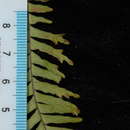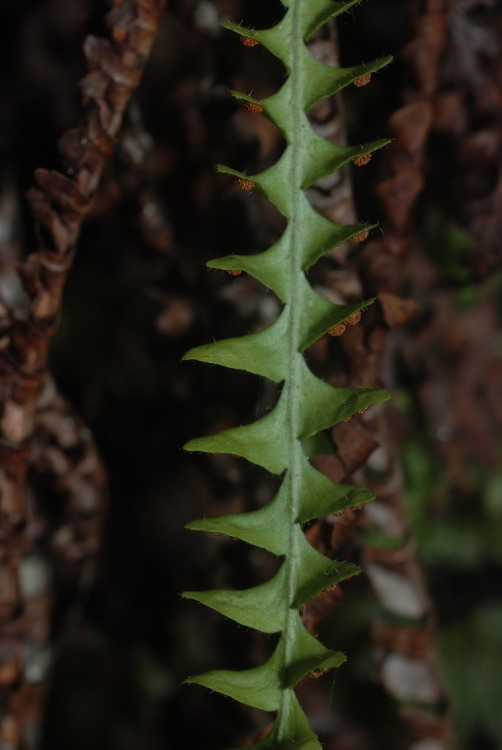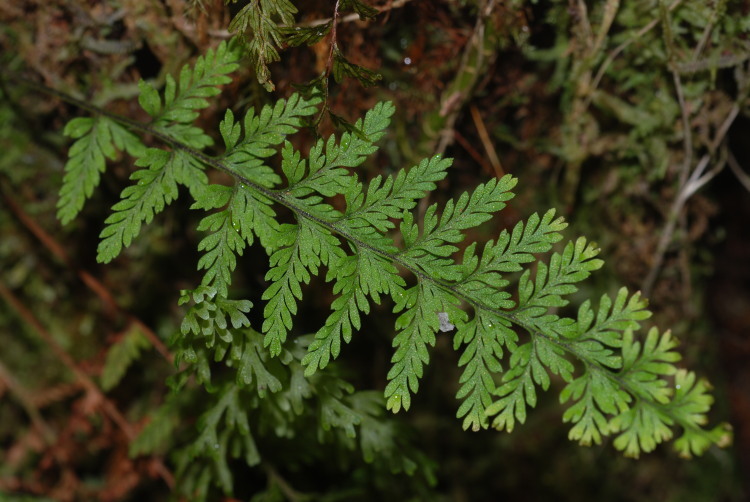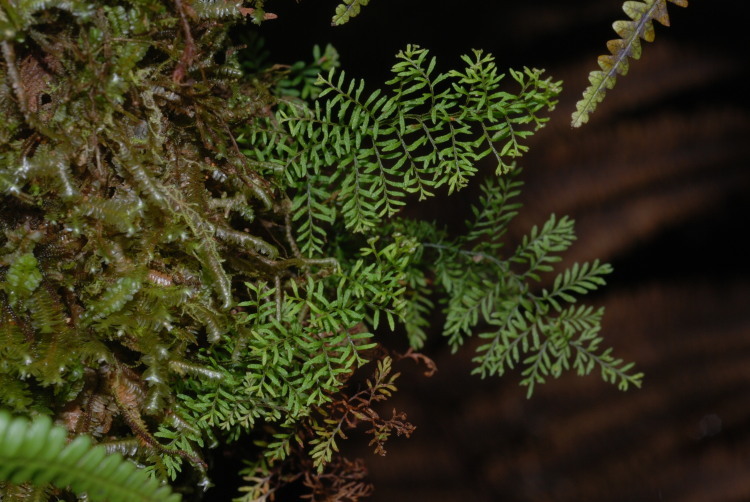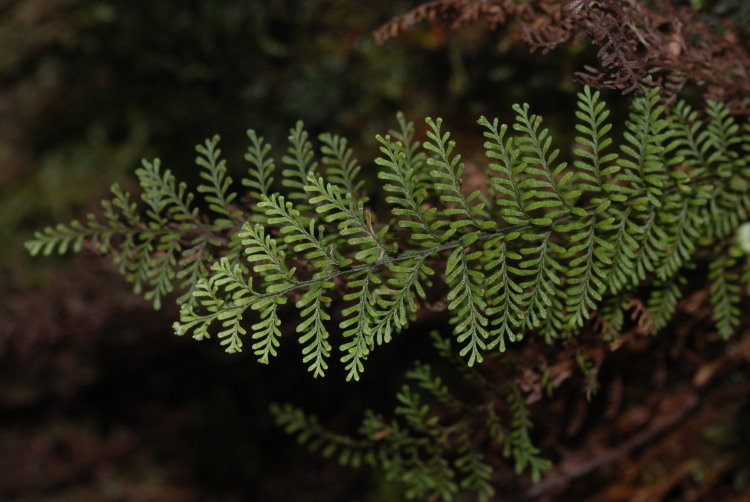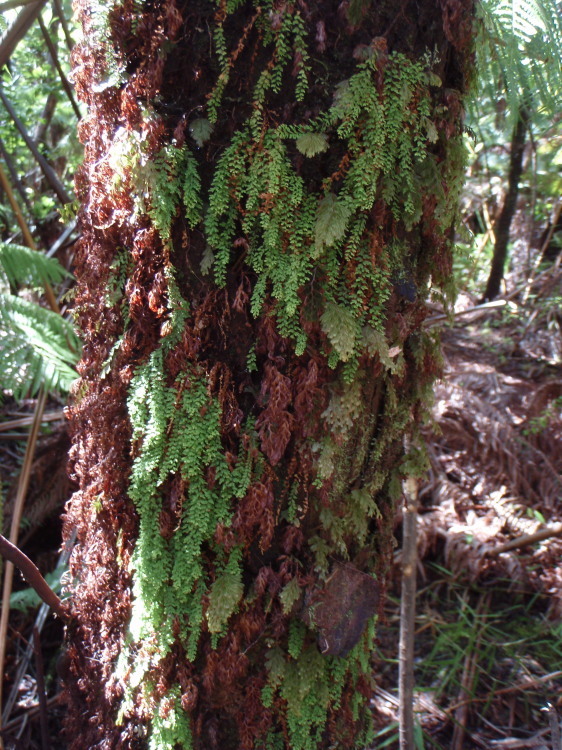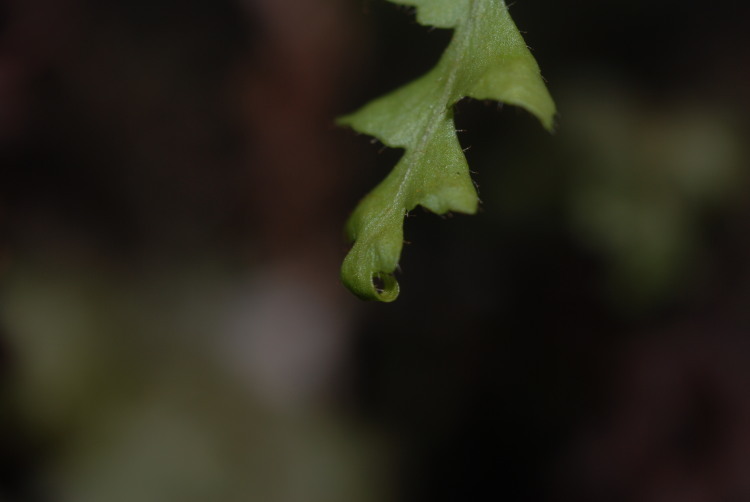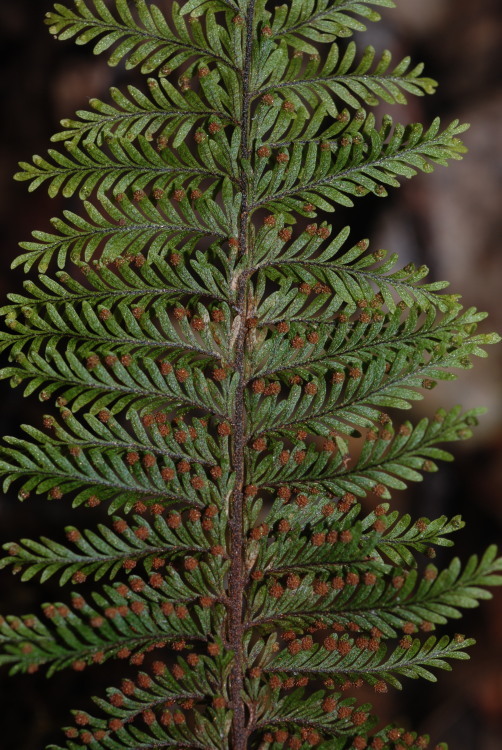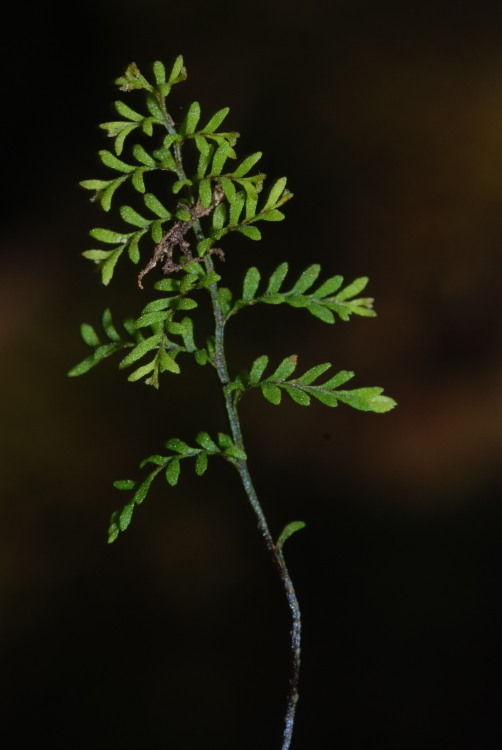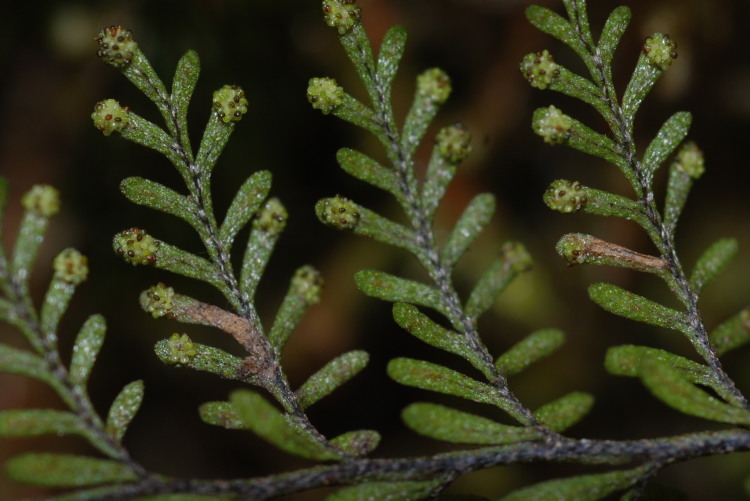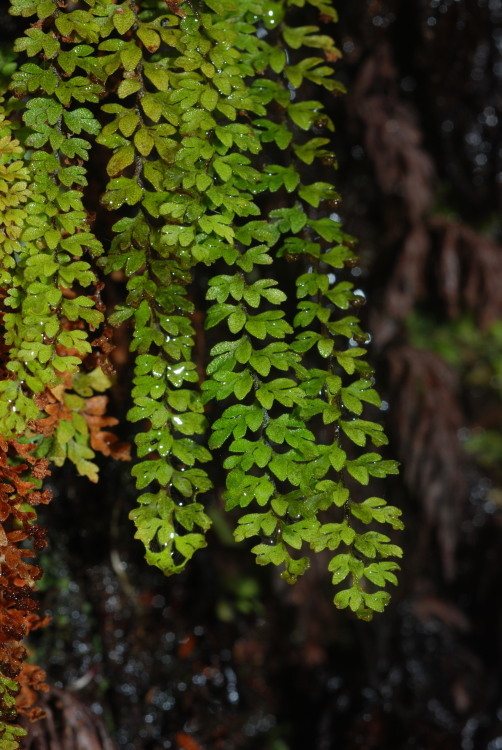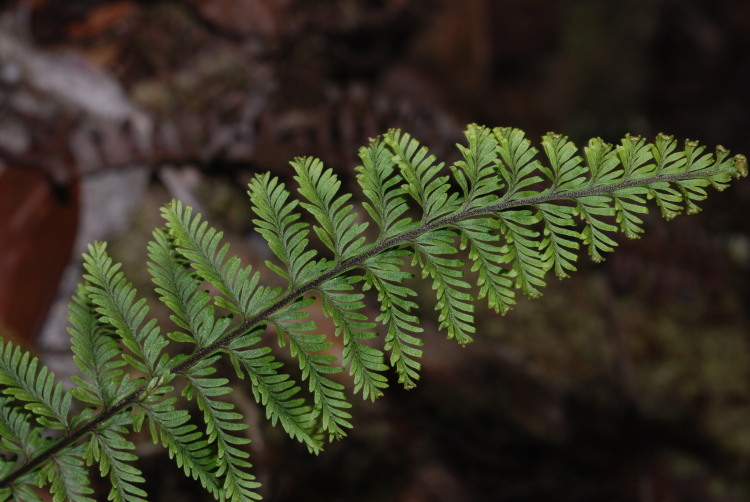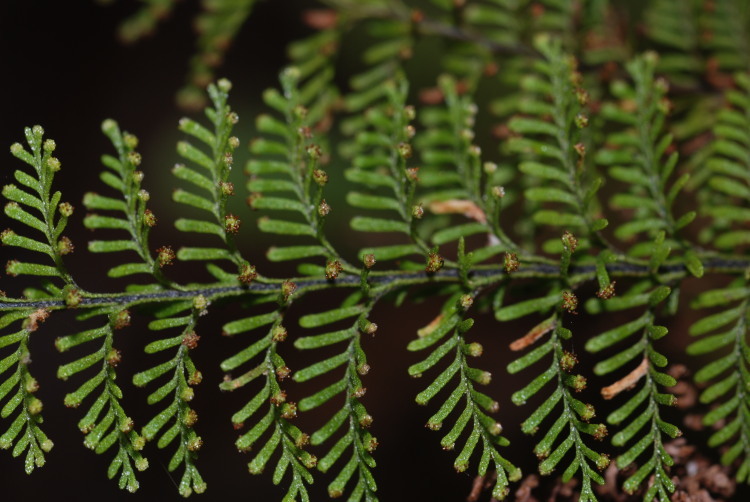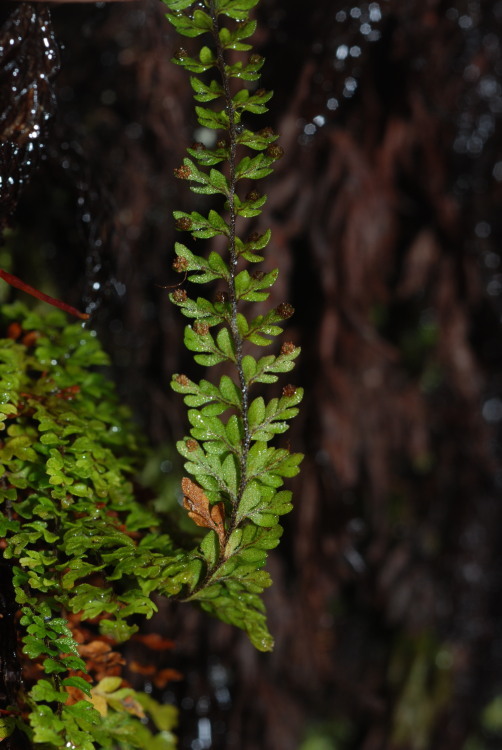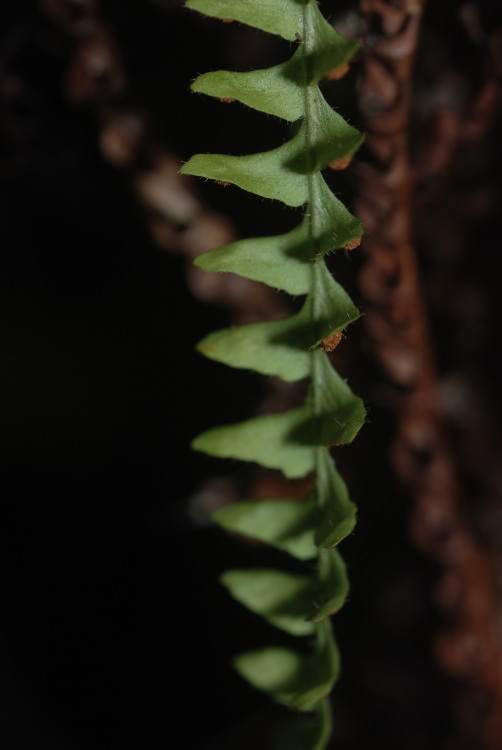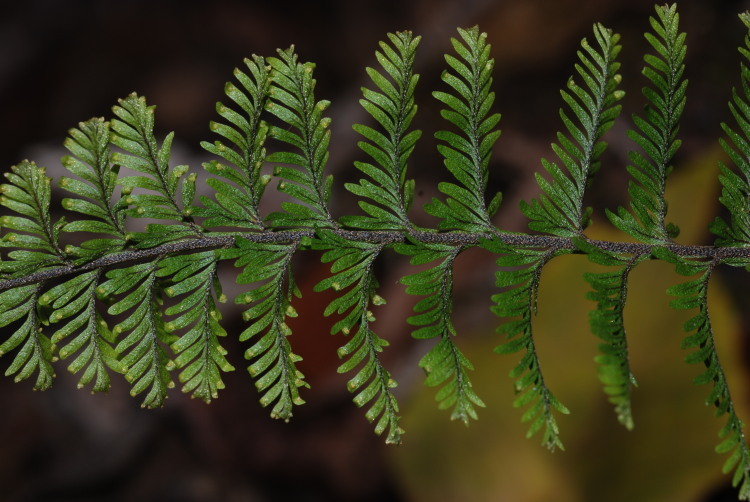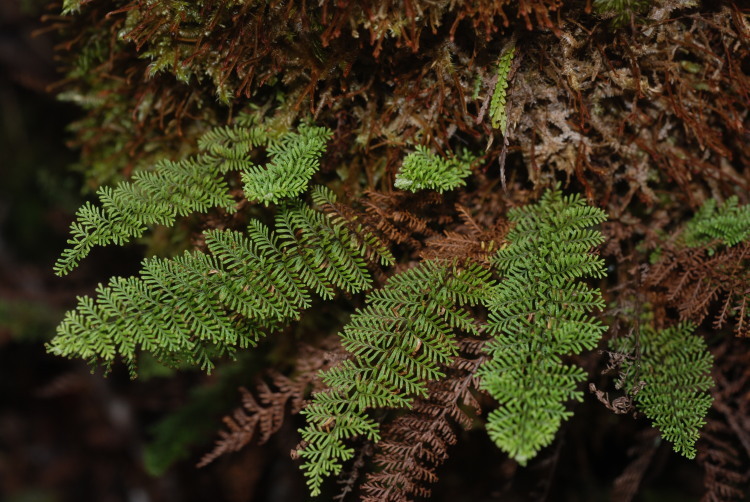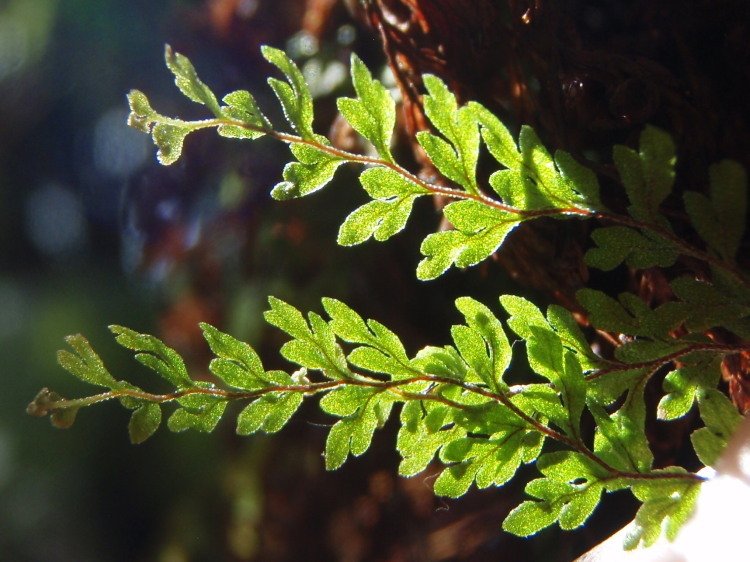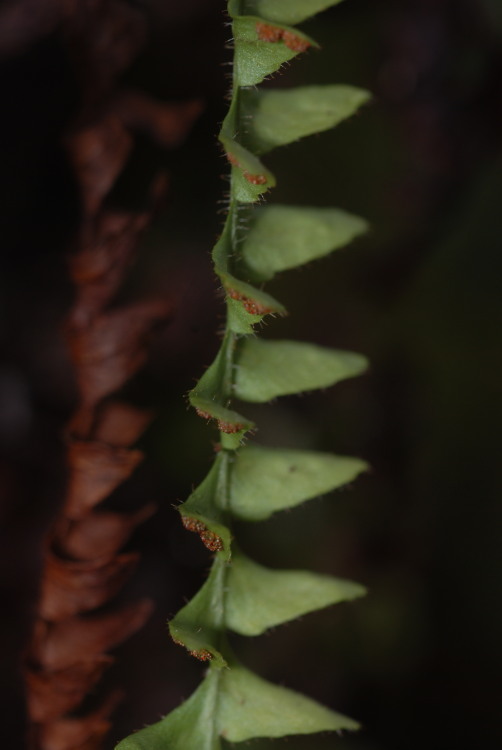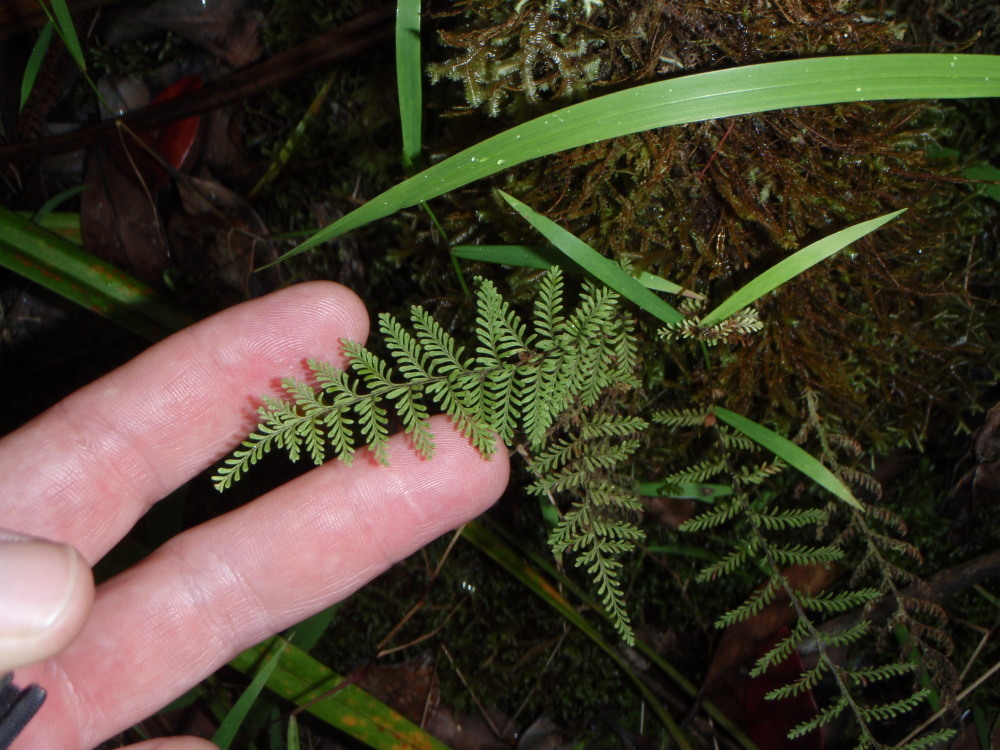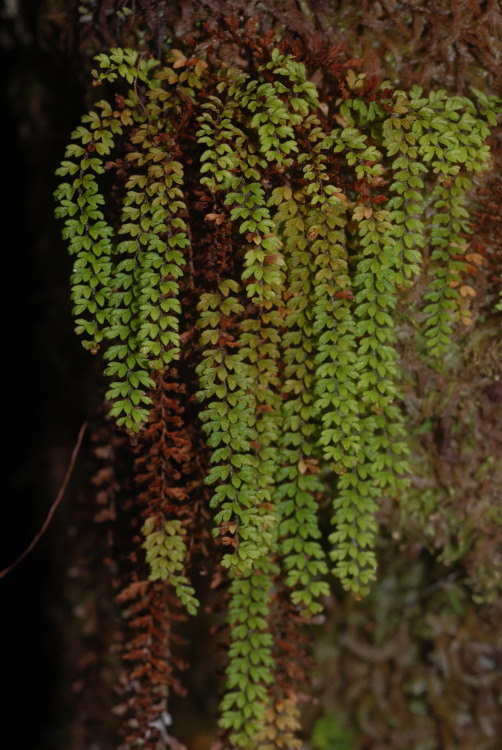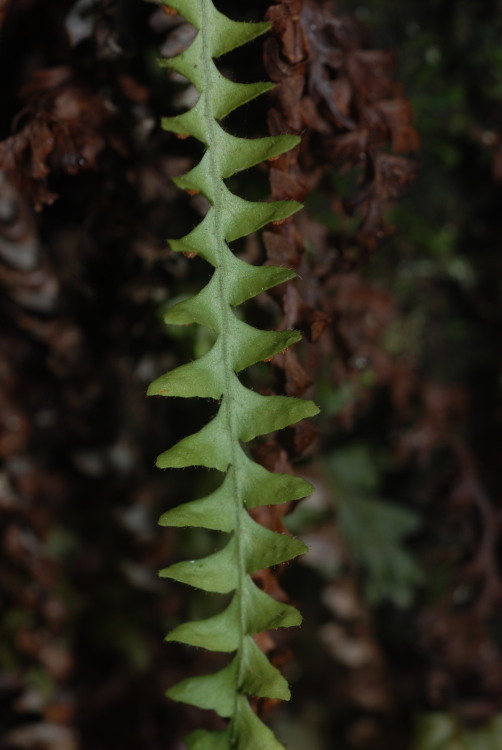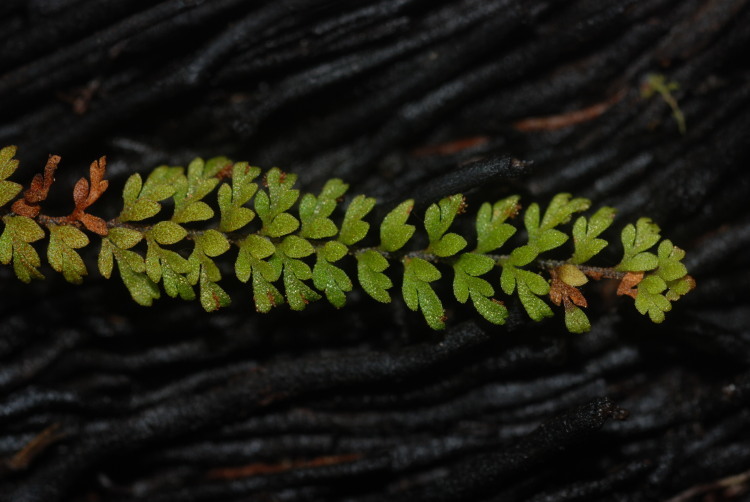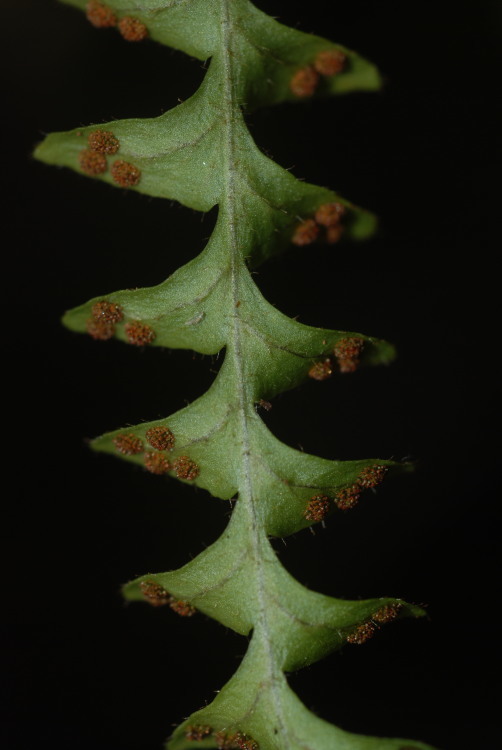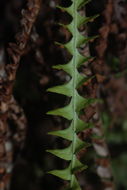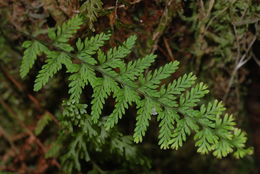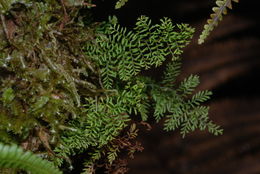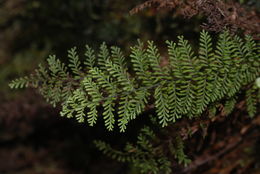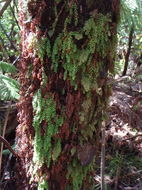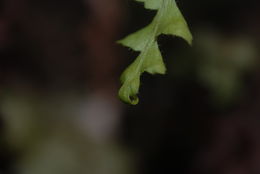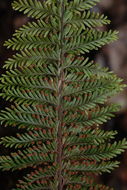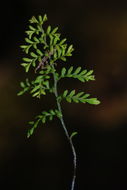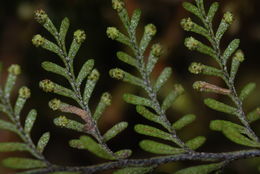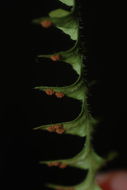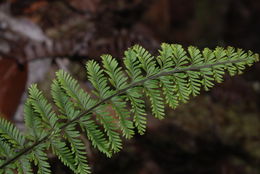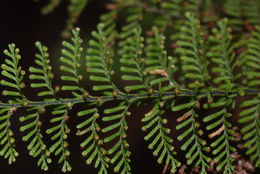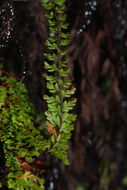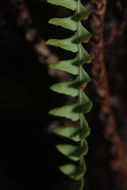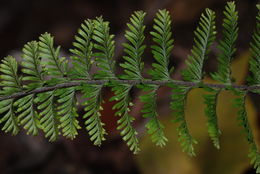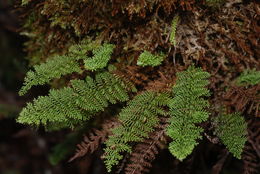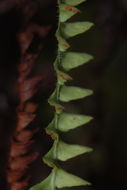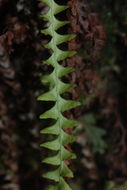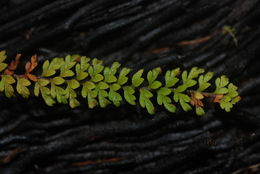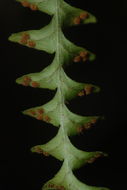-
This has become a rare and endangered fern in a genus endemic to the Hawaiian Islands. Originally known from all of the major Hawaiian Islands, now it is only found in Glenwood on the Big Island and in a few small populations on Kauai. According to USFWS, the population has declined rapidly (2009), with over 1200 individuals in the 1990's and now only 51-123 individuals in 2009. In my limited perspective, this species is on the brink of extinction.
-
Genus is endemic to Hawaiian Islands and found on all major islands. Rhizomes are long-creeping, slender. Blades are 2 pinnate-pinnatifid to 3 pinnate. A key characteristic is the acroscopic basal pinnule which is often enlarged and pinnatifid to 1-pinnate.
-
The genus is endemic to the Hawaiian Islands and this species grows on Kauai, Oahu, Lanai and Maui. Approximate elevation of this photo is 4100ft/ 1250m.
-
The Adenophorus genus is endemic to Hawaiian Islands and this species is one of the most common of the genus. Epiphytic and often grows on Ohia trees (Metrosideros polymorpha). Rhizomes are 'short-creeping' and thus the fronds are usually clustered. 2-pinnate blades; acroscopic basal pinnule often slightly pinnatifid.
-
Genus is endemic to Hawaiian Islands. Often found growing in moss on Ohia (Metrosideros polymorpha) tree trunks and associated with Sphaerocionium lanceolatum ferns. Elevation approximately 3870ft/1180m. The University of Hawaii Rainfall atlas estimates annual rainfall at around 105 inches for this location.
-
This has become a very rare and endangered fern in a genus endemic to the Hawaiian Islands. Originally known from all of the major Hawaiian Islands, now it is only found in Glenwood on the Big Island and in a few small populations on Kauai. According to USFWS, the population has declined rapidly (2009), with over 1200 individuals in the 1990's and now only 51-123 individuals in 2009. In my limited perspective, this species is on the brink of extinction.
-
Genus is endemic to Hawaiian Islands and found on all major islands. Photo shows sori which are abaxial and subapical.
-
The genus is endemic to the Hawaiian Islands and this species grows on Kauai, Oahu, Lanai and Maui. Approximate elevation of this photo is 4100ft/ 1250m.
-
The Adenophorus genus is endemic to Hawaiian Islands and this species is one of the most common of the genus.
-
Genus is endemic to Hawaiian Islands. Often found growing in moss on Ohia (Metrosideros polymorpha) tree trunks and associated with Sphaerocionium lanceolatum ferns. Elevation approximately 3860ft/1177m. The University of Hawaii Rainfall atlas estimates annual rainfall at around 105 inches for this location.
-
This has become a very rare and endangered fern in a genus endemic to the Hawaiian Islands. Glenwood on the Big Island is supposed to have the largest population of Adenophorus periens, with 30 plants found in 1998. I have only found 1 plant on 3 trips in this area, during 2012-2013. In the most recent USFWS status report in 2009, only 51-123 plants are known to exist in all the Hawaiian Islands. In my limited perspective, I would venture that this species is on the brink of extinction.
-
Genus is endemic to Hawaiian Islands and found on all major islands. Note pinnatifid basal acroscopic pinnules; a few of the other pinnules are slightly divided. Species is extremely variable, but key characteristics are the long-creeping rhizome, epigeous growth from moss mats near base of tree and fronds which are often 3-pinnate.
-
The Adenophorus genus is endemic to Hawaiian Islands and this species is one of the most common of the genus. Sori are abaxial or subapical and may extend beyond tips of ultimate segments.
-
Genus is endemic to Hawaiian Islands. Note the uplifted frond showing the abaxial surface with sori marginal and wider than lobes. Elevation approximately 3860ft/1177m.
-
This has become a very rare and endangered fern in a genus endemic to the Hawaiian Islands. Glenwood on the Big Island is supposed to have the largest population of Adenophorus periens, with 30 plants found in 1998. I have only found 1 plant on 3 trips in this area, during 2012-2013. In the most recent USFWS status report in 2009, only 51-123 plants are known to exist in all the Hawaiian Islands. In my limited perspective, I would venture that this species is on the brink of extinction.
-
Genus is endemic to Hawaiian Islands and found on all major islands. Note pinnatifid basal acroscopic pinnules; a few of the other pinnules are slightly divided. Species is extremely variable, but key characteristics are the long-creeping rhizome, epigeous growth from moss mats near base of tree and fronds which are often 3-pinnate. Photo shows abaxial suface.
-
One characteristic of A. tamariscinus is the short-creeping rhizome which creates a cluster of fronds as in this photo. Elevation around 3300ft/1006m. This forest along the Stainback highway is lush and receives around 250 inches of rain per year.
-
Genus is endemic to Hawaiian Islands. Close up shows 1-pinnate-pinnatifid blades. Elevation approximately 3860ft/1177m.
-
Note some of the key characteristics of this specieis: hairy blade margins, upper lobe margins perpendicular to the midrib, lobes which rotate like louvers out of the plane of the pendent fronds. This has become a very rare and endangered fern in a genus endemic to the Hawaiian Islands. In my limited perspective, I would venture that this species is on the brink of extinction. Elevation of this photo around 2305ft/703m.
-
High rainfall area, perhaps 200 inches annually. Ohia trees (Metrosideros polymorpha) and tree fern (Cibotium glaucum & menziesii) rain forest. Close to active volcano (Puu Oo). Fern genus endemic to Hawaiian Islands.
-
Genus is endemic to Hawaiian Islands. Elevation approximately 2300ft/701m. The University of Hawaii Rainfall Atlas estimates 196 inches of annual rainfall at this location.
-
This has become a very rare and endangered fern in a genus endemic to the Hawaiian Islands. In my limited perspective, I would venture that this species is on the brink of extinction with less than 150 individuals known to exist (USFWS 2009). Elevation of this photo around 2305ft/703m.
-
Genus is endemic to Hawaiian Islands. Elevation approximately 2300ft/701m. Photo shows the adaxial surface of blade. A few of the sori on the lower abaxial surface are mature and are wider than the lobes and are visible in this photo.
-
This has become a very rare and endangered fern in a genus endemic to the Hawaiian Islands. In my limited perspective, I would venture that this species is on the brink of extinction with less than 150 individuals known to exist (USFWS 2009). Elevation of this photo around 2305ft/703m. Photo shows the abaxial blade surface.

